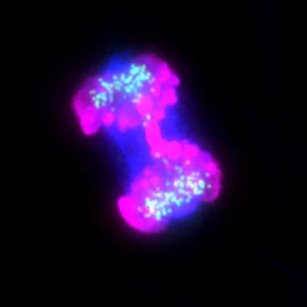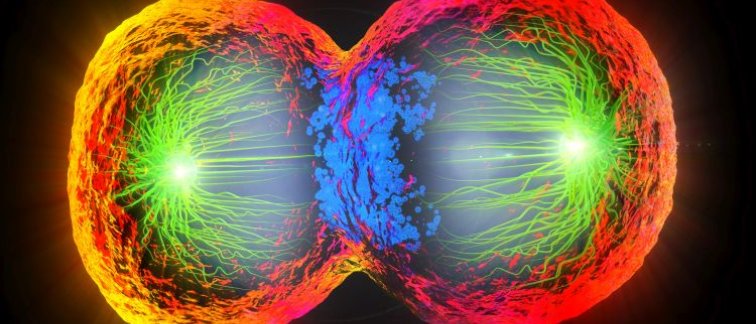Splitting up is complicated
During the fundamental process of cell division (mitosis), genetic information must be equally distributed between the two new daughter cells. Disruption of this crucial step potentially leads to damage in the DNA molecules that hold the genetic information (chromosomes) or unequal distribution of chromosomes between the daughter cells. These errors are associated with several human pathologies, including cancer.
One of the proteins responsible for monitoring problems during mitosis is coded by the BUB1 gene. Defects in BUB1 have been associated with cancer, however, its role in congenital human development has remained unclear. Low expression of BUB1 has been associated with spontaneous miscarriages in humans and homozygous BUB1 disruption in mice is lethal.
Surprising mutations
A collaborative effort involving clinicians and researchers from Portugal, Austria, and the Netherlands has led to the identification of the first known patients with mutations in both copies of BUB1. Both patients displayed microcephaly (a congenital malformation in which the brain is smaller than average), intellectual disability and several patient-specific features.
“Given its vital importance for correct cell division, it was surprising to find patients with mutations in such a critical gene,” explains Raquel Oliveira co-corresponding author of the study from the Instituto Gulbenkian de Ciência (IGC) in Portugal.
A wide range of pathways
Although cells from both patients displayed abnormal chromosome structure or numbers, the molecular mechanisms underlying these errors in cell division were different between them. “The associated mutations display differential effects on total level and activity of the protein, enabling a dissection of the different roles of BUB1 in a clinical context,” says Job de Lange, shared senior author of the study from the department of Human Genetics at Cancer Center Amsterdam.
“We showed how each mutation affected protein abundance and function, and their impact on various pathways that control the fidelity of mitosis,” adds Sara Carvalhal, co-first author of the study (Algarve Biomedical Center).
Besides providing new insight on the roles of BUB1, this study also sheds light on how mitotic defects impact the development of the human body and support the idea that the developing brain is particularly susceptible to problems in mitosis. The authors suggest that the described mitotic errors might cause the death of cells that are important for brain development, accounting for the clinical manifestations of this novel inherited neurodevelopmental disorder, namely microcephaly and intellectual disability.
According to the researchers, “these findings confirm that BUB1 is required for a wide range of pathways that ensure faithful mitosis.”
A better understanding
The research also contributes to a better understanding of rare syndromes with similar/overlapping clinical or molecular features, including mosaic variegated aneuploidy (MVA), cohesinopathies and primary microcephaly (MCPH).
From the report, the authors conclude: “Long-term follow up and characterization of more patients is necessary to clarify a potentially enhanced cancer risk and to fully describe the phenotypic spectrum associated with BUB1-related neurodevelopmental disorders.”
For more information, contact Dr. Job de Lange, or read the publication 'Biallelic BUB1 mutations cause microcephaly, developmental delay, and variable effects on cohesion and chromosome segregation' in Science Advances.

People involved at Cancer Center Amsterdam / Amsterdam UMC:
Martin A. Rooimans
Anneke B. Oostra
Annet van Hagen
Quinten Waisfisz
Mieke van Haelst
Rob Wolthuis
Job de Lange

